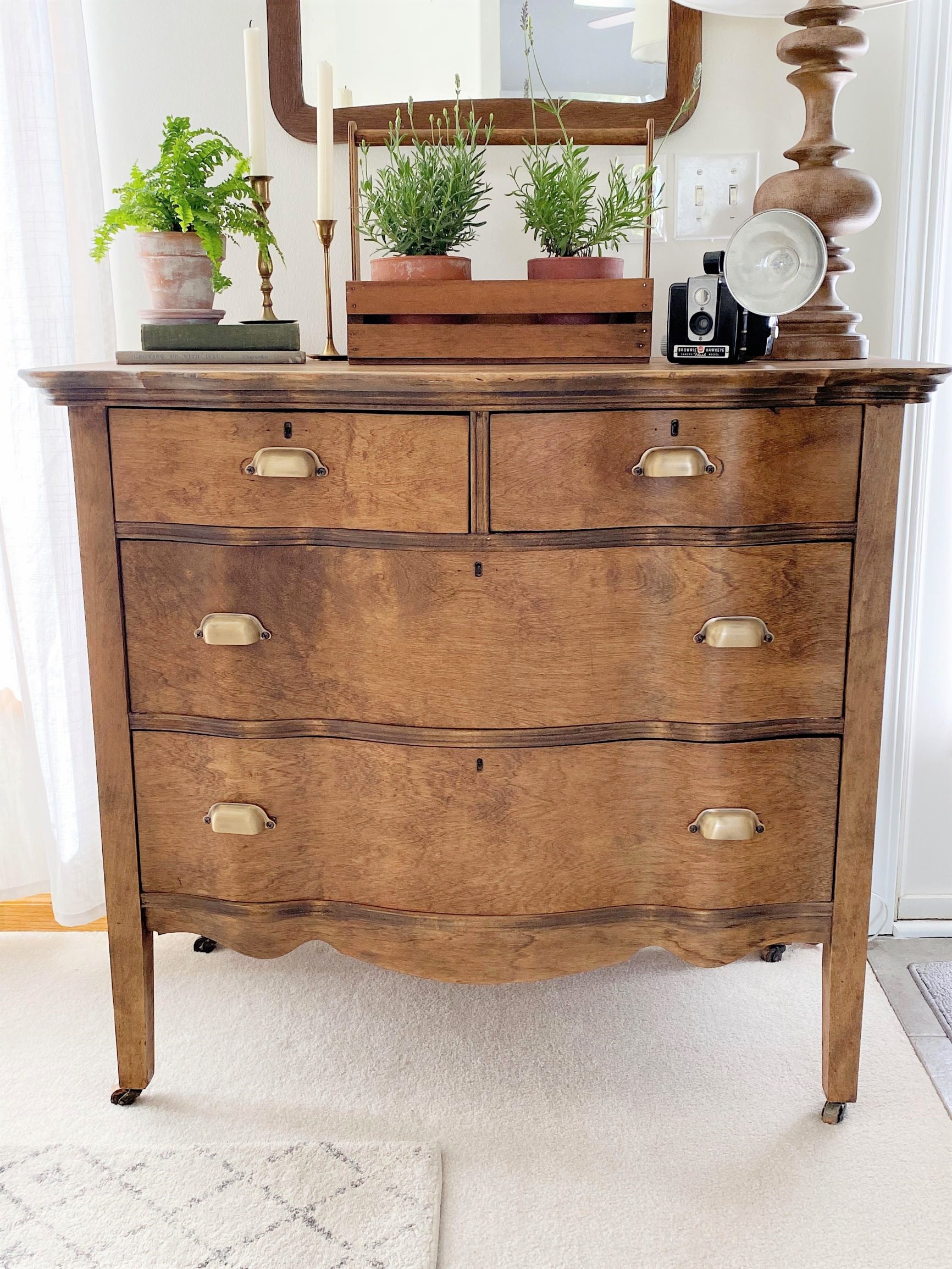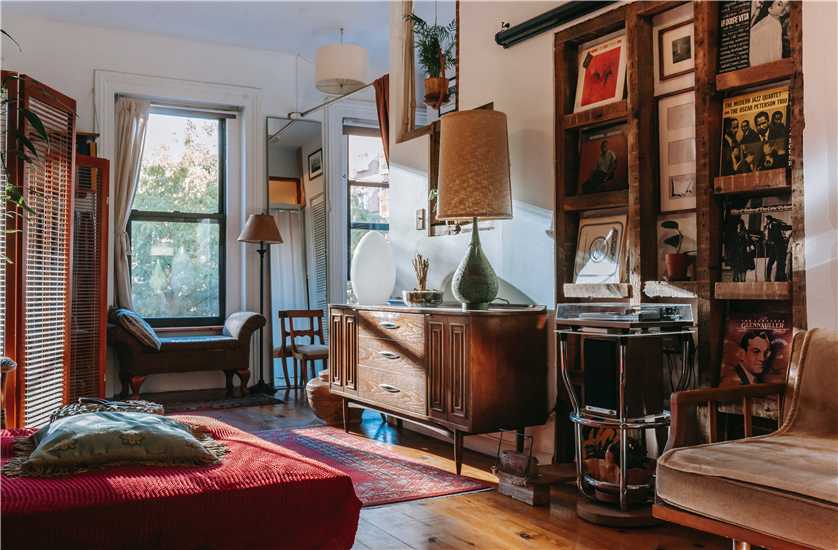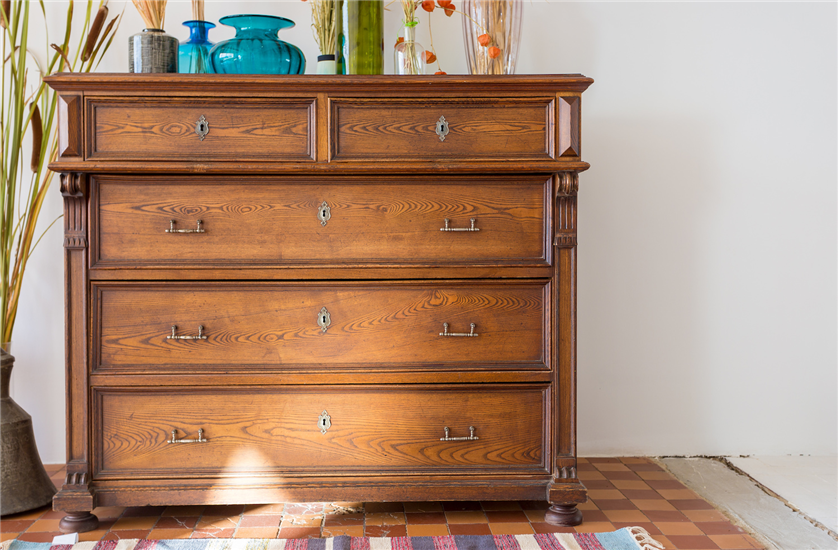A Beginner’S Guide to Vintage And Antique Furniture Styles
Are you intrigued by the charm of vintage and antique furniture but feel overwhelmed by the myriad of styles out there? You’re not alone.
Navigating the world of vintage and antique furniture can be as enchanting as it is confusing. Imagine discovering a piece that not only adds character to your space but also tells a story spanning decades or even centuries. This guide is crafted just for you, aiming to demystify these timeless treasures and help you make informed choices.
Whether you’re looking to add a touch of nostalgia to your home or simply want to understand the value of your grandmother’s old cabinet, this beginner’s guide will illuminate the path to your perfect vintage or antique find. Get ready to unlock the secrets of furniture styles that have stood the test of time and see how they can transform your living space into a haven of history and elegance.
Antique Vs. Vintage Furniture
Exploring the world of furniture, you may encounter the terms “antique” and “vintage.” These words often describe old furniture, but they have distinct meanings. Understanding these differences helps you appreciate the history and value of each piece.
Defining Antique Furniture
Antique furniture refers to items over 100 years old. These pieces often showcase craftsmanship from earlier times. Antiques are usually handmade with traditional techniques. They offer a glimpse into the past and tell stories through design and material.
Characteristics Of Vintage Pieces
Vintage furniture is typically between 20 to 100 years old. These pieces reflect the style and trends of their time. Vintage items might show signs of wear, adding character. They are often more affordable than antiques. Vintage pieces can include iconic designs from the mid-20th century.
Key Differences
The primary difference between antique and vintage is age. Antiques are older than 100 years. Vintage furniture spans a more recent timeline. Value also differs; antiques are often more valuable due to rarity and age. Meanwhile, vintage pieces are prized for their style and nostalgia.
Popular Antique Furniture Styles
Discover timeless elegance with popular antique furniture styles. Explore classic designs like Victorian, Colonial, and Art Deco. Perfect for beginners, this guide simplifies vintage furniture, making it easy to appreciate and identify each unique style.
Are you fascinated by the charm and history that antique furniture brings to your home? Popular antique furniture styles offer a window into different eras, each boasting unique characteristics that can transform your space into a timeless masterpiece. Whether you’re a seasoned collector or a curious beginner, understanding these styles can enhance your appreciation and guide your choices.Victorian Era Elegance
Victorian furniture is synonymous with opulence and intricate designs. Picture ornate carvings and lavish upholstery, often in deep, rich colors like burgundy and forest green. This style reflects the prosperity of the Victorian era, where furniture was a symbol of status. Imagine visiting a friend’s home and sitting in a plush velvet armchair that makes you feel like royalty. You might find yourself drawn to the romantic curves and elaborate embellishments of Victorian pieces. If you appreciate a touch of drama and sophistication, Victorian furniture might be your perfect match.Georgian Period Design
Georgian furniture is characterized by its elegance and symmetry. This style focuses on clean lines and classic proportions, often using mahogany wood. The design is refined yet practical, making it suitable for both formal and casual settings. Think about a dining table with tapered legs and a simple yet graceful silhouette. You could host a dinner party and impress your guests with the understated beauty of Georgian design. It’s a style that encourages harmonious living without overwhelming your space.Art Nouveau Influence
Art Nouveau furniture is all about fluidity and natural forms. Inspired by nature, this style features curves, organic shapes, and motifs like flowers and vines. It’s a celebration of creativity and artistic expression. Imagine discovering an Art Nouveau cabinet with swirling designs that seem to dance across its surface. You might appreciate how this style brings a sense of whimsy and liveliness to your home. If you love artistic flair and a connection to the natural world, Art Nouveau pieces can be a stunning addition.As you explore these styles, consider what resonates with your personal taste and lifestyle. Which era speaks to you? Are you drawn to the grandeur of Victorian elegance, the balance of Georgian design, or the artistic spirit of Art Nouveau? Your choice will add not just beauty, but also a story to your living space.
Common Vintage Furniture Styles
Exploring vintage furniture styles offers a glimpse into history. Discover popular styles like Mid-century Modern, Art Deco, and Victorian. Each style showcases unique designs, materials, and craftsmanship, providing timeless charm and elegance.
Exploring vintage furniture styles can feel like a journey through time. Each style reflects the era’s cultural and economic influences. By understanding these styles, you can find pieces that not only complement your home but also tell a story.Mid-century Modern Appeal
Mid-Century Modern furniture is all about simplicity and functionality. Think clean lines, gentle curves, and a mix of materials like wood, metal, and plastic. This style became popular in the mid-20th century and is perfect for those who love a minimalist aesthetic. Imagine a sleek teak sideboard that offers ample storage. It not only serves a practical purpose but also adds a touch of elegance to your living space. Have you ever noticed how a single piece of Mid-Century furniture can transform the entire vibe of a room?Rustic Farmhouse Charm
Rustic Farmhouse style brings warmth and coziness into any home. It often features distressed wood, natural textures, and a neutral color palette. This style evokes a sense of nostalgia, reminiscent of simpler times. Consider a sturdy farmhouse table that becomes the heart of your dining room. It’s where you gather with family and friends for meals and celebrations. Does your home have a spot that could benefit from this inviting charm?Industrial Revolution Aesthetics
The Industrial style draws inspiration from old factories and industrial spaces. It often includes raw materials like metal, exposed brick, and reclaimed wood. This style offers a unique blend of ruggedness and sophistication. Picture a coffee table made from reclaimed wood and iron. It becomes a conversation starter in your living room, showcasing your appreciation for history and sustainability. What unexpected materials could you incorporate to embrace this aesthetic in your home? Exploring these common vintage furniture styles can open up new possibilities for your home decor. Each piece you choose not only serves a function but also adds character and depth to your living spaces. Which style resonates with you the most?
Credit: edithandevelynvintage.com
Identifying Furniture Periods
Identifying furniture periods can be both fascinating and rewarding. Vintage and antique furniture offers glimpses into different eras of design. Each period has unique characteristics that make it special. Understanding these periods helps in appreciating the rich history behind the pieces. This guide will introduce you to the key elements to identify furniture periods effectively.
Recognizing Style Markers
Each furniture period has distinct style markers. These markers help identify the era of a piece. Look for specific shapes, carvings, and finishes. For example, curved lines and floral motifs suggest the Rococo style. Straight lines and simple forms might indicate the Arts and Crafts period. Recognizing these markers is crucial for understanding furniture history.
Understanding Material Usage
Materials used in furniture can reveal its age and origin. In the 18th century, mahogany was popular for its durability and beauty. Walnut and oak were commonly used in earlier periods. The type of wood and its finish can hint at the furniture’s period. Pay attention to the presence of materials like brass or wrought iron. These details can provide essential clues about the piece’s background.
Iconic Design Elements
Some furniture periods are known for iconic design elements. The Victorian era is famous for its ornate details and heavy decoration. Mid-century modern pieces often feature clean lines and minimalistic designs. Identifying these elements helps in categorizing furniture accurately. Look for recurring themes and motifs in the design. These elements often define the uniqueness of each furniture period.
Evaluating Furniture Quality
Explore vintage and antique furniture styles by examining craftsmanship, materials, and design. Learn to identify quality pieces by noting detailed carvings and sturdy joints. Recognize different eras through unique style elements and finish.
Evaluating furniture quality is crucial when diving into vintage and antique styles. You don’t want to end up with a piece that looks charming but falls apart in a year. Knowing what to look for can save you from costly mistakes and ensure you bring home a piece that not only adds character to your space but also stands the test of time. Let’s break down the essentials.Inspecting Construction Techniques
The way a piece is put together speaks volumes about its quality. Look for dovetail joints in drawers; these are a sign of craftsmanship and durability. Check for solid wood construction rather than particle board or veneer, which indicates longevity. Do the legs and arms feel sturdy? A gentle shake can reveal weaknesses in construction.Assessing Material Durability
Material quality can make or break your vintage find. Solid oak, mahogany, and walnut are known for their durability. Feel the surface—is it smooth and well-finished? Rough spots or uneven varnish can hint at shortcuts in quality. Think about the intended use; a dining table will need more robust materials than a decorative side table.Signs Of Authenticity
Authenticity matters if you’re looking for true vintage or antique pieces. Check for labels or stamps that indicate the maker or era. Look at wear patterns—consistent wear in expected places can indicate age, while inconsistent wear may suggest recent distressing. Do you notice any signs of repair? While repairs are not necessarily bad, they can affect the piece’s authenticity and value. By focusing on these aspects, you gain confidence in your choices and avoid regrets. Have you ever bought a piece thinking it was vintage, only to find out it was a reproduction? Share your experience and tips below!
Credit: www.midwestlifeandstyle.com
Caring For Vintage And Antique Pieces
Owning vintage and antique furniture brings unique charm to any space. These pieces tell stories of the past and deserve special attention. Proper care ensures they remain beautiful and functional for years. Here, we explore essential tips for maintaining and preserving your cherished furniture.
Cleaning And Maintenance Tips
Regular cleaning keeps furniture looking its best. Dust surfaces weekly using a soft cloth. Avoid harsh chemicals that can damage finishes. For wooden pieces, use a mild soap solution. Gently wipe, then dry with a clean cloth. Test any cleaner on a hidden area first. This prevents unwanted damage.
Preservation Techniques
Proper preservation extends the life of vintage furniture. Keep items away from direct sunlight. This prevents fading and warping. Use curtains or blinds for protection. Maintain stable humidity levels in your home. Extreme dryness or moisture can harm wood. Consider using a humidifier or dehumidifier as needed.
Restoration Considerations
Sometimes, restoration becomes necessary for antique pieces. Evaluate whether restoration or conservation suits your furniture. Professional help might be needed for valuable items. Restore only what is essential to retain authenticity. Ensure materials and techniques match the original. This maintains the piece’s historical integrity.
Where To Find Vintage And Antique Furniture
Finding the perfect vintage or antique furniture piece can be a thrilling adventure. Whether you’re seeking a charming Victorian chair or a mid-century modern table, knowing where to look is key. Fortunately, there are several places where you can unearth these treasures. Let’s explore some of the best options for discovering vintage and antique furniture.
Antique Shops And Markets
Antique shops offer a curated selection of pieces, often with fascinating histories. When you walk into one, it’s like stepping into a different era. Each item has its own story, waiting to be told. Markets, on the other hand, provide a bustling environment where dealers gather to showcase their finds. These places allow you to physically interact with the furniture, inspecting craftsmanship and authenticity.
Visit local antique shops on weekends when they might have new arrivals. Chat with the owners to gain insights into the items’ provenance. Markets often have events that celebrate particular eras or styles, making it easier to find specific pieces.
Online Marketplaces
The internet has revolutionized how we shop for furniture. Online marketplaces offer an extensive range of vintage and antique pieces. Websites like eBay, Etsy, and Chairish have dedicated sections for antique furniture. You can filter by style, era, and price, making it easier to find what suits your taste.
Read reviews from previous buyers to ensure authenticity and quality. Don’t hesitate to ask sellers questions about the items. Ensure shipping costs are reasonable, especially for larger pieces. You might be surprised at the unique finds available with just a few clicks.
Estate Sales And Auctions
Estate sales are treasure troves for vintage and antique furniture. These sales occur when someone’s possessions are liquidated, often featuring items that have been in the family for generations. Auctions also provide a thrilling experience, where you can bid on items you love.
Estate sales might be advertised locally or online. Arrive early to get the best picks. Auctions can be competitive, but they offer a chance to snag unique pieces at potentially lower prices. Consider attending one if you’re eager to engage in a bit of friendly competition.
So, where will you start your search? Each option offers its own unique experience and benefits. Whether you prefer in-person browsing or the convenience of online shopping, there’s a world of vintage and antique furniture waiting for you to discover.
Incorporating Antique And Vintage Styles In Modern Homes
Incorporating antique and vintage furniture into modern homes can add charm. These pieces bring a sense of history and craftsmanship. They introduce unique character and warmth. Many people love mixing these styles with contemporary designs. It creates a home that feels both timeless and current. Below, explore how to blend these styles effortlessly.
Blending With Contemporary Décor
Antique furniture can complement modern spaces beautifully. Use sleek lines to balance ornate features. Neutral colors work well with vintage furniture. They allow the details to shine. Consider using a vintage chair in a minimalist living room. This creates a striking contrast that draws attention. Mixing styles can make a space feel more dynamic.
Creating Focal Points
Antique pieces often serve as focal points in a room. A vintage armoire can be a conversation starter. Place it in a prominent spot. Let it anchor your space. Use lighting to highlight its unique features. A well-placed antique piece can elevate the entire room. It adds depth and interest to your home.
Balancing Old And New
Balance is key when mixing old and new styles. Pair vintage items with modern accessories. This keeps the look fresh. Use cushions or throws to modernize an antique sofa. Combine modern art with vintage frames. This creates a cohesive look. The goal is harmony, not chaos. Let each piece tell its own story.

Credit: www.decorativecollective.com
Frequently Asked Questions
What Defines Vintage Furniture Style?
Vintage furniture style refers to pieces from past decades, typically 20-100 years old. These pieces often showcase unique design elements and craftsmanship from their era. They offer a nostalgic charm and are characterized by their aged appearance, which can add character and history to your home decor.
How To Identify Antique Furniture?
Antique furniture is generally over 100 years old. Look for signs of age like patina, craftsmanship, and historical markings. Check for labels or maker’s marks, indicating authenticity and era. The construction techniques and materials used often help in distinguishing antique pieces from reproductions.
Why Choose Vintage Furniture?
Choosing vintage furniture offers sustainability and uniqueness. These pieces often have superior craftsmanship and materials compared to modern furniture. They bring character and a sense of history to your space. Additionally, vintage furniture can be more affordable and eco-friendly, reducing demand for new manufacturing.
How Do Vintage And Antique Differ?
Vintage refers to items 20-100 years old, while antiques are over 100 years old. Vintage items often reflect a particular era’s style, whereas antiques have historical significance. The distinction helps collectors and buyers understand age, value, and authenticity, ensuring informed purchasing decisions.
Conclusion
Exploring vintage and antique furniture styles can be a rewarding journey. It adds charm and character to any space. Each piece tells its own story. Keep an eye on craftsmanship and details. These elements make each item unique. Start small and build your collection over time.
Visit local shops and markets for hidden gems. Learn to appreciate the history behind every item. This adventure can enrich your home and life. Enjoy the journey, and discover timeless treasures. Your space will reflect your personal style and history.
Embrace the beauty of the past today.


